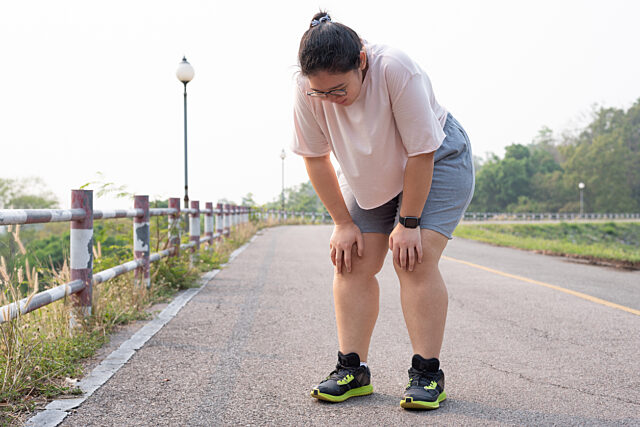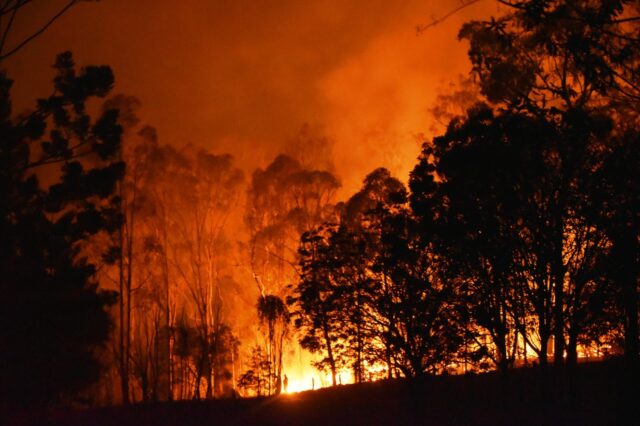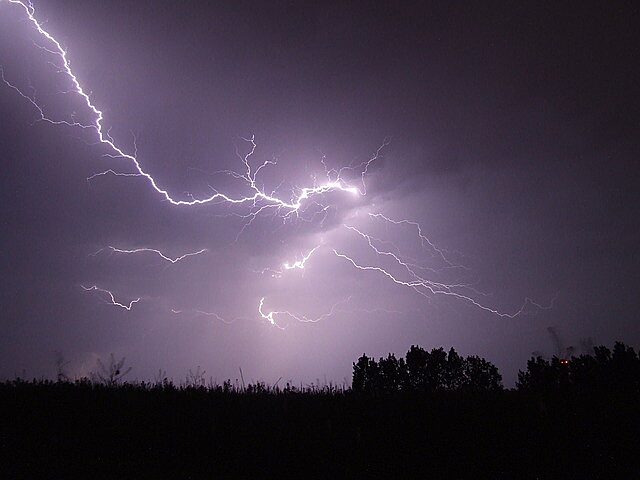Australian Asthma Handbook
The National Guidelines for Health Professionals
Cite
For those who smoke, advise quitting and support them to quit.
Follow the national smoking cessation guidelines for health professionals.
Recommendation type: Consensus recommendation
Among adults with asthma, exposure to cigarette smoke (smoking or regular exposure to environmental tobacco smoke within the previous 12 months) has been associated with a significantly increased risk of needing acute asthma care within the next 2–3 years.[Osborne 2007]
Osborne ML, Pedula KL, O’Hollaren M, et al. Assessing future need for acute care in adult asthmatics: the Profile of Asthma Risk Study: a prospective health maintenance organization-based study. Chest 2007; 132: 1151-61.
RACGP’s guidelines on smoking cessation
Pharmaceutical Society of Australia’s Professional practice guidelines for pharmacists: Nicotine dependence support
Recommendation type: Consensus recommendation
Use of e-cigarettes results in an acute reduction in lung function in people with asthma, and a greater acute increase in airway inflammation than in people without asthma.[Kotoulas 2020]
Vaping is associated with chronic lung disease and acute lung injury.[Casey 2020]
Casey AM, Muise ED, Crotty Alexander LE. Vaping and e-cigarette use. Mysterious lung manifestations and an epidemic. Curr Opin Immunol 2020; 66: 143-150.
Kotoulas SC, Pataka A, Domvri K, et al. Acute effects of e-cigarette vaping on pulmonary function and airway inflammation in healthy individuals and in patients with asthma. Respirology 2020; 25: 1037-1045.
RACGP’s guidelines on smoking cessation
Pharmaceutical Society of Australia’s Professional practice guidelines for pharmacists: Nicotine dependence support
Recommendation type: Consensus recommendation
Observational studies suggest that exposure to outdoor pollutants (ozone, nitrogen dioxide, sulphur dioxide, carbon monoxide, or particulate matter) trigger asthma symptoms and exacerbations, including severe exacerbations requiring hospital admission.[Tiotiu 2020] Exposure to ozone, nitrogen dioxide, sulphur dioxide, or particulate matter is associated with reduction in lung function.[Tiotiu 2020] Effects on asthma depend on dose and duration of exposure.[Tiotiu 2020]
Airborne particulate matter due to land fires is associated with an increase in asthma hospitalisations and emergency department visits.[Borchers 2019]
No avoidance measures for individual patients are strongly supported by clinical trial evidence. Strategies that have been suggested for patients include driving with windows closed and air conditioner in recycle mode, subscribing to air quality alerts, and staying inside during or using close-fitting N95 facemasks when air pollution levels are high.[Tiotiu 2020]
Borchers Arriagada N, Horsley JA, Palmer AJ, et al. Association between fire smoke fine particulate matter and asthma-related outcomes: Systematic review and meta-analysis. Environ Res 2019; 179(Pt A): 108777.
Tiotiu AI, Novakova P, Nedeva D, et al. Impact of air pollution on asthma outcomes. Int J Environ Res Public Health 2020; 17: 6212.
Environmental Protection Authority Victoria AirWatch
Environmental Protection Authority South Australia Air quality monitoring
Environmental Protection Authority Tasmania Real-time Air Quality Data for Tasmania
Environmental Protection Authority Northern Territory Air quality
Australian Capital Territory Air quality and pollen
Department of Water and Environmental Regulation Western Australia Air quality index
Queensland Department of the Environment, Tourism, Science and Innovation Live air data
Advise:
Recommendation type: Consensus recommendation
An Australian longitudinal cohort study reported that adults living in houses with gas cooking, the combination of wood heating and exposure to indoor smoking, or the combination of wood heating and gas cooking, developed greater lung function decline and greater bronchodilator responsiveness over ten years, compared with people in households using reverse-cycle air conditioning, electric cooking and no smoking.[Dai 2021]
Exhaust fan use and opening windows frequently may reduce the adverse effects of household air pollution produced by combustion heating and cooking on current asthma.[Dai 2021]
Dai X, Bui DS, Perret JL, et al. Exposure to household air pollution over 10 years is related to asthma and lung function decline. Eur Respir J 2021; 57: 2000602.
Consider allergen avoidance only when the patient has proven sensitivity to the allergen and the allergen is a clinically significant asthma trigger.
Suggest only strategies that are likely to be effective and feasible to adopt.
Do not recommend onerous or expensive allergen avoidance strategies that have not been shown to improve asthma outcomes, but advise patients or parents/carers about options and whether they are supported by evidence.
Recommendation type: Adapted from GINA
Routine allergen avoidance is not recommended for people with asthma as a strategy reducing symptoms or exacerbations, because potential effectiveness depends on the allergen and its clinical significance for the individual’s asthma. Allergen avoidance strategies are often complicated and expensive.[GINA 2025] Most strategies are not supported by evidence for clinical benefits, and it is not possible to identify which patients will benefit [GINA 2025]
For patients living in mouldy houses, building repairs to reduce dampness in homes (e.g. leak repair, improvement of ventilation, removal of water-damaged materials) may reduce asthma symptoms.[Sauni 2015]
There is limited evidence to support the use of cockroach baits in the homes of patients allergic to cockroaches,[GINA 2025, NAEPP 2020] and for integrated pest management systems in the homes of those allergic to pest rodents.[GINA 2025]
For other allergen reduction strategies, there is limited evidence that they reduce allergen levels, but do not improve asthma symptom control or reduce exacerbations.[GINA 2025]
For patients allergic to pets, clinical trial evidence does not support removal of pets, HEPA filter air cleaners, replacement of carpet with hard flooring, or use of vacuum cleaners with HEPA filters and double-thickness bags.[GINA 2025]
For patients with dust mite allergy, the use of impermeable mattress and pillow covers as a single intervention has been shown to be ineffective in improving asthma symptom control.[NAEPP 2020] Multicomponent house dust mite avoidance strategies have not been shown to improve asthma outcomes in adults.[Crocker 2011, Gøtzsche 2008]
Complex multi-trigger strategies to reduce allergens in the home have not been shown to improve asthma outcomes in adults.[Crocker 2011]
Some outdoor allergens, such as pollens and moulds, are impossible to avoid completely.[GINA 2025]
Crocker DD, Kinyota S, Dumitru GG, et al. Effectiveness of home-based, multi-trigger, multicomponent interventions with an environmental focus for reducing asthma morbidity: a community guide systematic review. Am J Prev Med 2011; 41: S5-32.
Global Initiative for Asthma (GINA). Global Strategy for Asthma Management and Prevention, 2025. Available from: www.ginasthma.org
Gøtzsche PC, Johansen HK. House dust mite control measures for asthma: systematic review. Allergy 2008; 63: 646-659.
National Asthma Education and Prevention Program Coordinating Committee Expert Panel Working Group. 2020 focused updates to the asthma management guidelines. US National Heart, Lung and Blood Institute, Department of Health and Human Services: 2020.
Sauni R, Verbeek JH, Uitti J, et al. Remediating buildings damaged by dampness and mould for preventing or reducing respiratory tract symptoms, infections and asthma. Cochrane Database Syst Rev 2015; 2: CD007897.
More information on asthma triggers
Information on specific allergen immunotherapy for adults and adolescents
Patients with asthma should be considered at risk of thunderstorm asthma if they are allergic to ryegrass pollen and exposed to high levels of airborne grass pollen during thunderstorms.
Advise patients who are at risk of thunderstorm asthma to:
Recommendation type: Consensus recommendation
Certain types of thunderstorms in spring or early summer in regions with high grass pollen concentrations in the air can cause life-threatening allergic asthma exacerbations in individuals sensitised to ryegrass.[Price 2021, Girgis 2000, Marks 2001, D’Amato 2016]
People with allergic rhinitis and allergy to ryegrass pollen (i.e. most people with springtime allergic rhinitis symptoms) are at risk of thunderstorm asthma if they live in, or are travelling to, a region with seasonal high grass pollen levels. This includes people with undiagnosed asthma, no previous asthma, and known asthma.[Price 2021, Girgis 2000]
Lack of inhaled corticosteroid preventer treatment has been identified as a risk factor. [Thien 2020]
D’Amato G, Vitale C, D’Amato M et al. Thunderstorm-related asthma: what happens and why. Clin Exp Allergy 2016; 46: 390-396.
Girgis ST, Marks GB, Downs SH et al. Thunderstorm-associated asthma in an inland town in south-eastern Australia. Who is at risk? Eur Respir J 2000; 16: 3-8.
Lohia S, Schlosser RJ, Soler ZM. Impact of intranasal corticosteroids on asthma outcomes in allergic rhinitis: a meta-analysis. Allergy 2013; 68: 569-79.
Marks GB, Colquhoun JR, Girgis ST, et al. Thunderstorm outflows preceding epidemics of asthma during spring and summer. Thorax 2001; 56: 468-471.
O’Hehir RE, Varese NP, Deckert K et al. Epidemic thunderstorm asthma protection with five-grass pollen tablet sublingual immunotherapy: a clinical trial. Am J Respir Crit Care Med 2018; 198: 126-8.
Price D, Hughes KM, Thien F, Suphioglu C. Epidemic Thunderstorm Asthma: Lessons Learned from the Storm Down-Under. J Allergy Clin Immunol Pract 2021; 9: 1510-1515.
Thien F, Davies JM, Hew M, Douglass JA, O'Hehir RE. Thunderstorm asthma: an overview of mechanisms and management strategies. Expert Rev Clin Immunol 2020; 16: 1005-1017.
Thien F, Beggs PJ, Csutoros D et al. The Melbourne epidemic thunderstorm asthma event 2016: an investigation of environmental triggers, effect on health services, and patient risk factors. Lancet Planet Health 2018; 2: e255-e63.
National Asthma Council Australia’s Thunderstorm asthma information paper
ASCIA’s Pollen calendar
Patients with grass pollen allergy who self-manage their asthma using non-prescription salbutamol are at highest risk of severe exacerbations during thunderstorms.
Information on thunderstorm asthma
Follow Australian Technical Advisory Group on Immunisation recommendations on RSV, influenza, pneumococcal, pertussis and COVID-19 vaccinations.
Provide patients with clinical evidence on risks and benefits to make informed decisions about recommended vaccinations that are not free of charge through the National Immunisation Program.
Recommendation type: Consensus recommendation
Upper respiratory tract infection, particularly viral infection is a common trigger for asthma symptoms and exacerbations.[Busse 2010]
The recommendation for vaccination of people with asthma against respiratory diseases is based on both general benefits and known additional risks of respiratory infections for people with asthma. There is a lack of clinical trial evidence directly demonstrating that vaccination prevents asthma symptoms or exacerbations.
RSV: RSV infection is a common trigger for hospitalisations for asthma in adults.[Falsey 2005] Adults with asthma have a significantly higher risk of hospitalisation due to RSV infection than those without.[Prasad 2021, Branche 2022] Among adults aged ≥60 years hospitalized with RSV, a high proportion have asthma, and approximately 50% of those with asthma have an asthma exacerbations during hospitalisation.[Tseng 2020] The Australian Technical Advisory Group on Immunisation lists severe asthma (defined as requiring frequent medical consultations or the use of multiple medicines) as a risk factor for severe RSV infection.[Australian Government Department of Health and Aged Care] RSV vaccines are highly effective in preventing RSV-related acute respiratory infection.[Australian Government Department of Health and Aged Care] The effectiveness of RSV vaccination on prevention of asthma exacerbations is not well documented.
Influenza: Australian Technical Advisory Group on Immunisation recommendations lists severe asthma (defined as requiring frequent medical consultations or the use of multiple medicines) as a risk factor for severe influenza infection.[Australian Government Department of Health and Aged Care] Randomised clinical trials do not clearly demonstrate that influenza vaccine prevents asthma exacerbations due to influenza.[Cates 2013] However, observational studies suggest that vaccination against influenza reduces rate of asthma exacerbations in adults.[Vasileiou 2017]
Pneumococcal disease: Asthma increases the risk of invasive pneumococcal disease, particularly among older adults.[Li 2020] The Australian Technical Advisory Group on Immunisation lists severe asthma (defined as requiring frequent medical consultations or the use of multiple medicines) as a risk factor for severe pneumococcal diseases. Pneumococcal vaccines are effective in preventing invasive pneumococcal disease in adults,[Dear 2003] but may not improve asthma outcomes [Sheikh 2002] or reduce the incidence of pneumonia in adults.[Dear 2003]
Pertussis: Pertussis infection may trigger asthma exacerbations.[GINA 2025] Pertussis vaccination reduces the risk of severe pertussis-related disease, but there is limited evidence on the efficacy of vaccination in preventing asthma exacerbations in adults.[GINA 2025]
COVID-19: The diagnosis of asthma is not a risk factor for severe COVID-19, compared with the general population.[Williamson 2020] However, people with a recent severe asthma exacerbation requiring treatment with systemic corticosteroids have a higher risk of death due to COVID-19.[Williamson 2020, Bloom 2021] Adolescents with a recent severe asthma exacerbation requiring systemic corticosteroids are at higher risk of hospitalisation if they acquire COVID-19.[Shi 2022] In patients aged 50 years and older, the diagnosis of asthma with recent ICS use was associated with lower mortality than among patients without an underlying respiratory condition in one study.[Bloom 2021] The effectiveness of COVID-19 vaccination in preventing asthma exacerbations is not known.
Australian Government Department of Health and Aged Care. Australian immunisation handbook (website) [accessed January 2025] https://immunisationhandbook.health.gov.au
Bloom CI, Drake TM, Docherty AB, et al. Risk of adverse outcomes in patients with underlying respiratory conditions admitted to hospital with COVID-19: a national, multicentre prospective cohort study using the ISARIC WHO Clinical Characterisation Protocol UK. Lancet Respir Med 2021: 9:699-711.
Branche AR, Saiman L, Walsh EE, et al. Incidence of Respiratory Syncytial Virus Infection Among Hospitalized Adults, 2017-2020. Clin Infect Dis 2022; 74: 1004-1011.
Busse WW, Lemanske RF Jr, Gern JE. Role of viral respiratory infections in asthma and asthma exacerbations. Lancet 2010; 376: 826-834.
Cates CJ, Rowe BH. Vaccines for preventing influenza in people with asthma. Cochrane Database Syst Rev 2013; 2: CD000364.
Dear K, Holden J, Andrews R, Tatham D. Vaccines for preventing pneumococcal infection in adults. Cochrane Database Syst Rev 2003; 4: CD000422.
Falsey AR, Hennessey PA, Formica MA, et al. Respiratory syncytial virus infection in elderly and high-risk adults. N Engl J Med 2005; 352: 1749-1759.
Global Initiative for Asthma (GINA). Global Strategy for Asthma Management and Prevention, 2025. Available from: www.ginasthma.org
Li L, Cheng Y, Tu X, et al. Association between asthma and invasive pneumococcal disease risk: a systematic review and meta-analysis. Allergy Asthma Clin Immunol 2020; 16: 94.
Prasad N, Walker TA, Waite B, et al. Respiratory Syncytial Virus-Associated Hospitalizations Among Adults With Chronic Medical Conditions. Clin Infect Dis 2021; 73: e158-e163.
Sheikh A, Alves B, Dhami S. Pneumococcal vaccine for asthma. Cochrane Database Syst Rev 2002; 1: CD002165.
Shi T, Pan J, Katikireddi SV, et al. Risk of COVID-19 hospital admission among children aged 5-17 years with asthma in Scotland: a national incident cohort study. Lancet Respir Med 2022; 10: 191-198.
Tseng HF, Sy LS, Ackerson B, et al. Severe Morbidity and Short- and Mid- to Long-term Mortality in Older Adults Hospitalized with Respiratory Syncytial Virus Infection. J Infect Dis 2020; 222: 1298-1310.
Vasileiou E, Sheikh A, Butler C, et al. Effectiveness of influenza vaccines in asthma: a systematic review and meta-analysis. Clin Infect Dis 2017; 65: 1388-1395.
Williamson EJ, Walker AJ, Bhaskaran K, et al. Factors associated with COVID-19-related death using OpenSAFELY. Nature 2020; 584: 430-436.
Refer to a respiratory physician or occupational physician.
Recommendation type: Adapted from TSANZ-NAC 2020
Continued exposure to a sensitiser risks worsening of symptoms, airflow limitation, and airway hyperresponsiveness.[Hoy 2020]
Management of sensitiser‐induced occupational asthma with ICS-LABA treatment has not been shown to prevent the long‐term deterioration of asthma in people who remain exposed to the sensitiser.[Hoy 2020]
Hoy R, Burdon J, Chen L, et al. Work-related asthma: A position paper from the Thoracic Society of Australia and New Zealand and the National Asthma Council Australia. Respirology 2020; 25: 1183-1192.
National Asthma Council Australia’s Work-related asthma. An update for primary care health professionals
National Asthma Council Australia and TSANZ’s position paper on work-related asthma
Occupational asthma is new-onset asthma (or recurrence of asthma after a period of remission) due to exposures to irritants or sensitisers in the workplace. Sensitiser-induced occupational asthma is far more common than irritant-induced occupational asthma.[Hoy 2020]
If a patient with asthma has a condition for which treatment with a beta-blocker is necessary, choose a cardioselective agent if possible.
Warn the patients about the risk of serious asthma exacerbations and ensure they have an up-to-date written asthma action plan.
Recommendation type: Consensus recommendation
First-generation non-selective beta-blockers have been reported to cause severe bronchospasm, including fatal reactions, both with oral and ocular administration.[Bennett 2021]
Cardioselective beta-blockers such as metoprolol, bisoprolol and atenolol can also result in severe bronchospasm.[Australian PI] However, observational data suggest that the rate of asthma deaths attributable to cardioselective beta1-blockers is negligible.[Bennett 2021]
A history bronchospasm or severe asthma are listed in TGA-approved product information as contraindications to the use of beta-blockers; advice differs between molecules.[Australian PI]
Australian Product Information – Tensig (atenolol) tablets. [Revised 5 August 2024.] Therapeutic Goods Administration (www.ebs.tga.gov.au)
Australian Product Information. Belaloc. Metoprolol tartrate [Revised 23 October 2019] Therapeutic Goods Administration (www.ebs.tga.gov.au)
Australian Product Information. Bicor (bisoprolol fumarate) tablets). [Revised 4 July 2024] Therapeutic Goods Administration (www.ebs.tga.gov.au)
Bennett M, Chang CL, Tatley M, et al. The safety of cardioselective β1-blockers in asthma: literature review and search of global pharmacovigilance safety reports. ERJ Open Res 2021; 7: 00801-2020.
Steiner M. On the correct use of eye drops. Aust Prescr 2008; 31: 16-17.
For patients using beta-blocker eyedrops, explain how to minimise systemic absorption by minimising passage through nasolacrimal duct into the nasopharynx: after instilling the drop, close eyes and applying pressure to the lacrimal puncta for 1–2 minutes.[Steiner 2008]
Recommendation type: Adapted from GINA
Aspirin-exacerbated respiratory disease is a distinct condition resulting in adult-onset asthma.[Rajan 2015] It is present in approximately 7% of people with asthma and approximately 15% of people with severe asthma.[Rajan 2015]
Aspirin-exacerbated respiratory disease typically progresses from nasal congestion and anosmia to chronic rhinosinusitis with nasal polyps, then asthma and hypersensitivity to aspirin and NSAIDs.[Szczeklik 2000]
Within minutes to hours of ingesting aspirin or NSAIDs, people with aspirin-exacerbated respiratory disease can develop dyspnoea and other reactions that can include angioedema and anaphylactoid shock.[Szczeklik 2000]
A presumptive diagnosis of aspirin-exacerbated respiratory disease is based on a history of reactions to aspirin or nonselective NSAIDs, with a higher degree of certainty in patients with chronic rhinosinusitis and nasal polyps.[Kennedy 2016] Aspirin challenge, performed in a specialist clinic with cardiopulmonary resuscitation capabilities, provides a definitive diagnosis.[GINA 2025]
Global Initiative for Asthma (GINA). Global Strategy for Asthma Management and Prevention, 2025. Available from: www.ginasthma.org
Kennedy JL, Stoner AN, Borish L. Aspirin-exacerbated respiratory disease: Prevalence, diagnosis, treatment, and considerations for the future. Am J Rhinol Allergy 2016; 30: 407-413.
Rajan JP, Wineinger NE, Stevenson DD, White AA. Prevalence of aspirin-exacerbated respiratory disease among asthmatic patients: A meta-analysis of the literature. J Allergy Clin Immunol 2015; 135: 676-81.
Szczeklik A, Nizankowska E, Duplaga M. Natural history of aspirin-induced asthma. AIANE Investigators. European Network on Aspirin-Induced Asthma. Eur Respir J 2000; 16: 432-436.
The diagnosis of asthma is not a contradiction for aspirin and NSAIDs unless the patient has a history of previous reactions.
Refer patients with suspected or confirmed food allergy to an allergist or clinical immunologist.
Ensure the patient has an anaphylaxis action plan and adrenaline auto-injector.
Recommendation type: Adapted from GINA
Foods are rarely a trigger for asthma.[Burks 2012]
However, coexisting asthma and food allergy is a strong risk factor for severe food-induced anaphylaxis, including life-threatening reactions.[Burks 2012]
Occupational exposure to sensitisers in foods (without ingestion) can result in occupational asthma.[Burks 2012]
Burks AW, Tang M, Sicherer S, et al. ICON: food allergy. J Allergy Clin Immunol 2012; 129: 906-920.
ASCIA’s action plans for anaphylaxis

Adjunctive management
When to consider allergen immunotherapy for patients with allergic asthma.

Clinical topics
Information on exercise-induced asthma symptoms in children and adults and asthma management for elite athletes.

Clinical topics
Information on managing common asthma triggers including exercise, respiratory infections, airborne allergens, and…

Clinical topics
How to advise patients on preventing severe asthma exacerbations if they have risk factors for thunderstorm asthma.